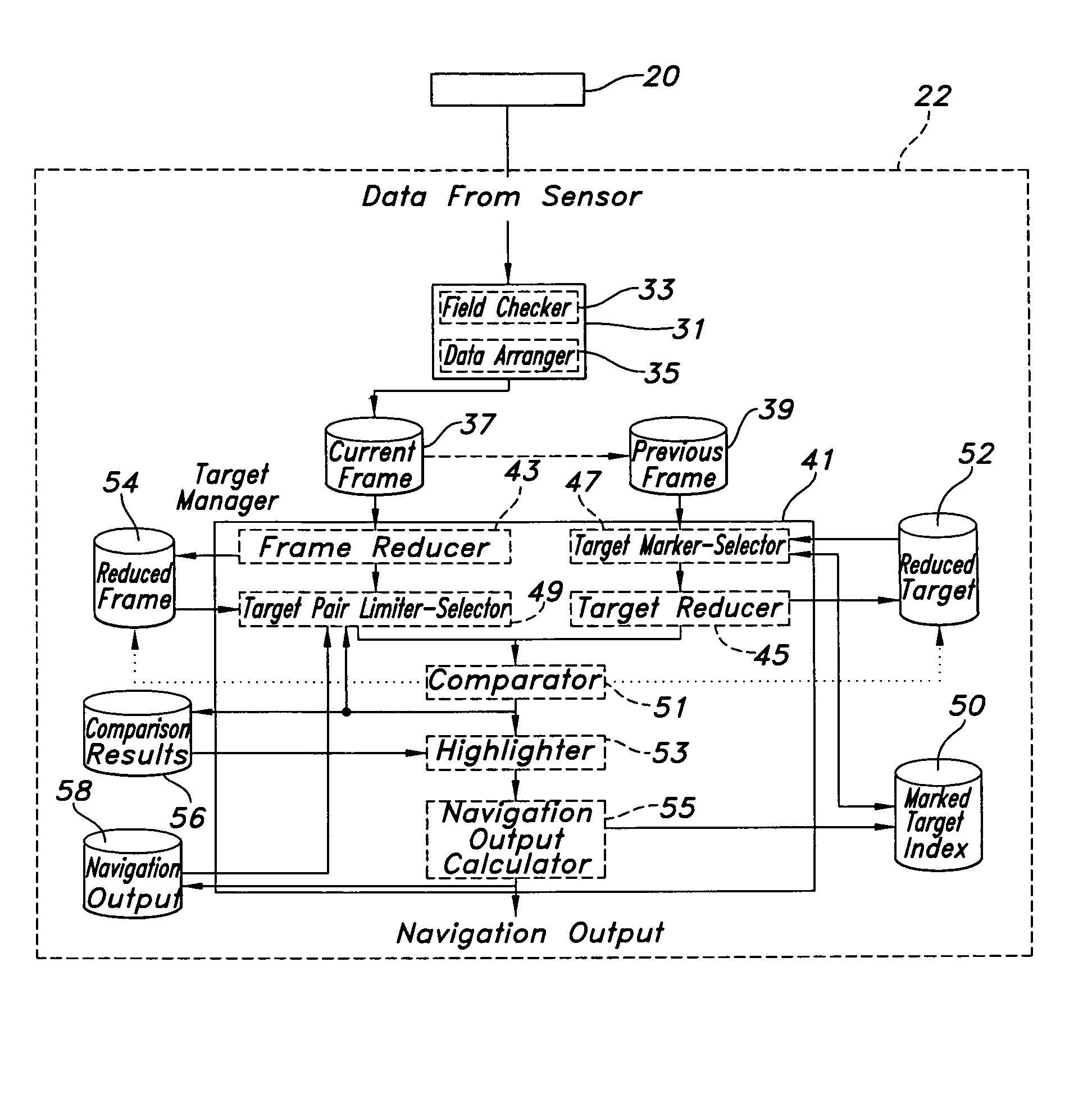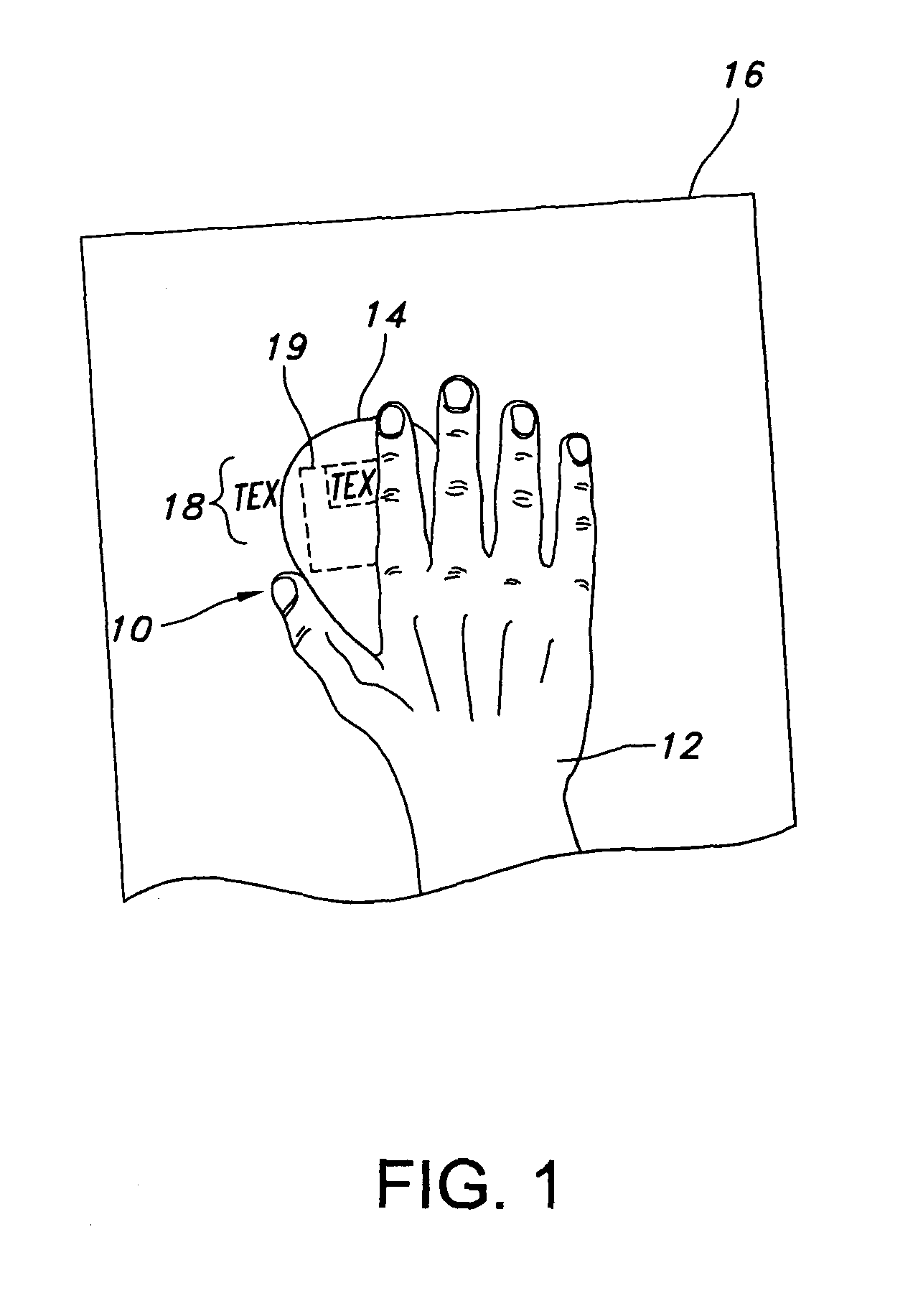Methods and apparatus for handheld printing with optical positioning
a handheld printer and optical positioning technology, applied in the field of handheld printers, can solve the problems of inability to print jobs, users have incomplete print jobs, and sometimes limited capabilities of sensor inputs, so as to facilitate manufacturing simplicity, improve computational efficiency, and minimize costs
- Summary
- Abstract
- Description
- Claims
- Application Information
AI Technical Summary
Benefits of technology
Problems solved by technology
Method used
Image
Examples
Embodiment Construction
[0034]In the following detailed description of the preferred embodiments, reference is made to the accompanying drawings that form a part hereof, and in which is shown by way of illustration, specific embodiments in which the invention may be practiced. These embodiments are described in sufficient detail to enable those skilled in the art to practice the invention and like numerals represent like details in the various figures. Also, it is to be understood that other embodiments may be utilized and that process, mechanical, electrical, architectural, software and / or other changes may be made without departing from the scope of the present invention. In accordance with the present invention, a handheld printer for printing with optical positioning, especially by way of optical position sensors, is hereafter described.
[0035]Preliminarily, however, skilled artisans will appreciate that an iterative process occurs in evaluating signals (and attendant data) from position sensors in a ha...
PUM
 Login to View More
Login to View More Abstract
Description
Claims
Application Information
 Login to View More
Login to View More - R&D
- Intellectual Property
- Life Sciences
- Materials
- Tech Scout
- Unparalleled Data Quality
- Higher Quality Content
- 60% Fewer Hallucinations
Browse by: Latest US Patents, China's latest patents, Technical Efficacy Thesaurus, Application Domain, Technology Topic, Popular Technical Reports.
© 2025 PatSnap. All rights reserved.Legal|Privacy policy|Modern Slavery Act Transparency Statement|Sitemap|About US| Contact US: help@patsnap.com



